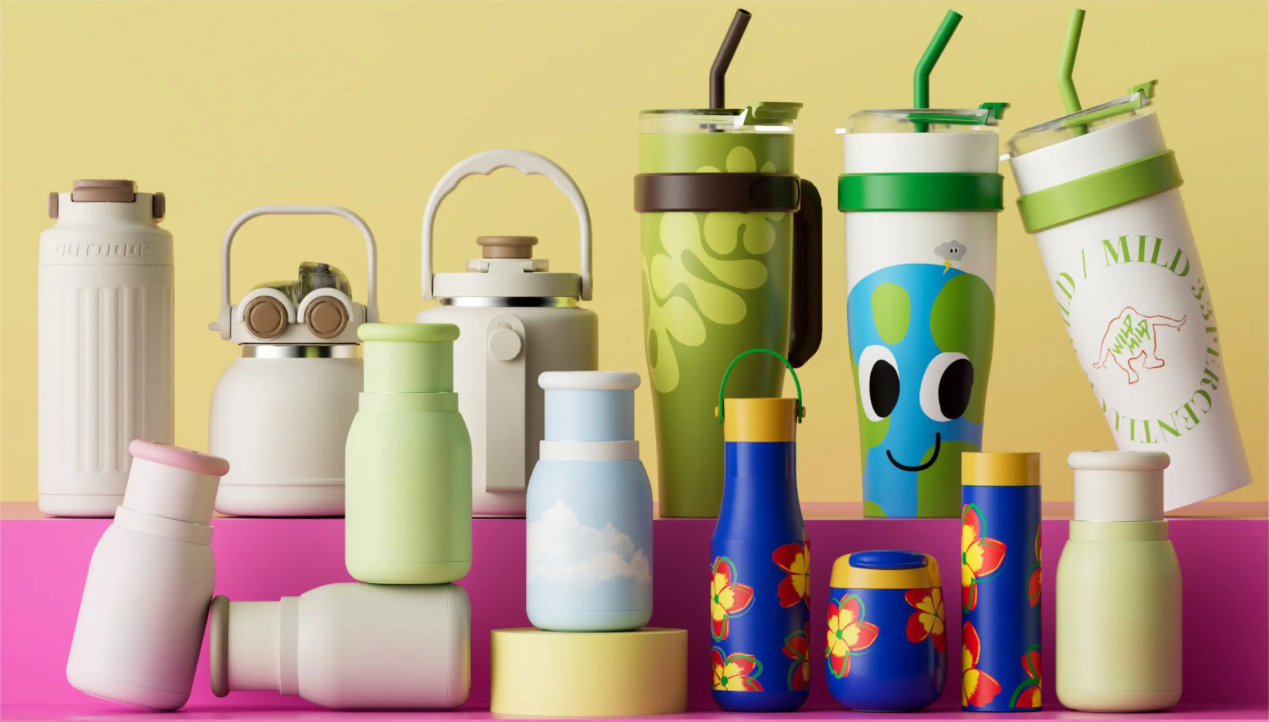The coating material of the inner liner of the thermos cup is mainly used to enhance the user experience (such as anti sticking, anti odor, easy cleaning, etc.), but the safety and durability of different coatings vary greatly. The following are common insulation cup inner liner coating materials and their characteristics.
1. Ceramic coating
(1) Material characteristics
Spray or sinter inorganic ceramic materials onto the surface of the inner liner to form a smooth and dense protective layer.
(2) Advantages
Safe and non-toxic: No chemical coating, stable at high temperatures, suitable for holding hot drinks.
Anti odor: does not absorb residual odors from tea, coffee, and other beverages.
Easy to clean: The surface is smooth and not prone to bacterial growth.
(3) Disadvantages
Easy to collide and peel off: Exposure to hard objects or long-term friction may cause the coating to peel off.
Slightly lower insulation: usually slightly worse than the insulation effect of stainless steel inner liner.
Applicable scenarios: Daily drinking water, tea, coffee, etc., especially suitable for people who are sensitive to odors.
2. Teflon coating (polytetrafluoroethylene, PTFE)
(1) Material characteristics
A chemical anti sticking coating commonly used in some low-priced insulated cups or electric kettle liners.
(2) Advantages
Strong anti adhesion: The liquid is not easy to residue and is easy to clean.
(3) Disadvantages
High temperature risk: Exceeding 260 ℃ may release harmful substances (hot water is generally safe for daily use, but dry burning should be avoided).
Easy to wear and tear: The coating may peel off after long-term use or scratching, affecting safety.
3. Other new coatings (such as nano coatings, silicone coatings)
(1) Material characteristics
Some brands use special processes such as nano ceramics and silicone composite coatings to enhance safety and durability.
(2) Advantages
Environmental safety: Some coatings have passed food grade certification and have better high-temperature resistance.
Enhanced wear resistance: less prone to detachment than traditional coatings.
(3) Disadvantages
High cost: often seen in high-end brands or specific series.
4. Uncoated stainless steel inner liner
(1) Material characteristics
Directly use 304/316 stainless steel without additional coating.
(2) Advantages
Highest safety: no risk of coating detachment, high temperature resistance, and corrosion resistance.
Strong durability: suitable for long-term use.
(3) Disadvantages
Easy to residual odor: It is necessary to clean coffee and tea in a timely manner after serving.
Cleaning is a bit troublesome: tea stains and scale may adhere to the surface.
The core risk of coated inner insulation cups lies in coating peeling or the release of harmful substances at high temperatures. If pursuing absolute safety, it is recommended to choose an uncoated stainless steel inner liner; If anti sticking and anti odor functions are required, ceramic coatings or new coating technologies from major brands should be given priority consideration.








